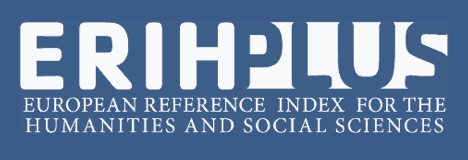The use of the LandscapAR application as a pedagogical resource for geographical education
Abstract
Connecting the new technologies that students already ostensibly use to effective learning is a challenge for every teacher and a pedagogical asset when this linkage is set. The theoretical basis was set up mainly on the precepts of Ausubel, Vygotsky and Piaget. The chosen application "LandscapAR" transformation of isolines captured by the mobile into 3D rendered images. The main objective was to verify the apprehension of the students in relation to the study of land relief and, particularly, of the level curves. The content was previously worked with the students, in Geography, of ten classes of the high school first year in the CEFET MG in the city of Belo Horizonte (MG). The activity with LandscapAr complemented the discussions, broadening the curiosity of students and making the cell phone a partner in the teaching-learning process.
References
CANTO, Josi Zanette. O desenvolvimento colaborativo de um aplicativo móvel como recurso pedagógico no ensino de Geografia. 2016, 66p. Trabalho de Conclusão do Curso de Especialização Educação na Cultura Digital da Universidade Federal de Santa Catarina –Araranguá, 2016.
CARVALHO, Ana Amélia Amorim. Como olhar criticamente o software educativo multimédia. Cadernos SACAUSEF – Sistema de Avaliação, Certificação e Apoio à Utilização de Software para a Educação e a Formação - Utilização e Avaliação de Software Educativo, Número 1, Ministério da Educação, 69-82, 85-86, 2005.
CASTORINA, José Antônio. O Debate Piaget-Vygotsky: a busca de um critério para a sua avaliação. In: Piaget-Vygotsky: novas contribuições para o debate. São Paulo, Ática, 1988. p. 7-50.
DANIELS, HARRY. Uma Introdução a Vygostky. Editora Loyola, São Paulo – SP, 2002.
ELKONIN, D.B. Psicologia do Jogo. Trad. Álvaro Cabral. São Paulo: Martins Fontes, 1998. Trad. de Psicologia Igri.
GALVÃO, Izabel. Henri Wallon: uma concepção dialética do desenvolvimento infantil. 2ª edição, Petrópolis, RJ: Vozes,2000.(Educação e desenvolvimento).
GOMES, Pilar et all. Jugar con los mapas. Barcelona, Tres Torres, 1997.
MACHADO, J. L. de A. Celular na sala de aula: O que fazer? Disponível em:
MORAES, M.C. Subsídios para Fundamentação do Programa Nacional de Informática na Educação. Brasília-DF,SEED/MEC, 1997.
MORAN, J. M. A educação que desejamos: Novos desafios e como chegar lá. 4.ed. Campinas: Papirus, 2007.
______. Ensino e aprendizagem inovadores com tecnologias audiovisuais e telemáticas. in: MORAN, J.; MASETTO, M.; BEHRENS, M. Novas Tecnologias e Mediação Pedagógica. 10ª Ed. Campinas: Papirus, 2000. Pp. 11-66
MOREIRA, Marco Antonio e Elcie F. Salzano Masini. Aprendizagem Significativa – A Teoria de David Ausubel. São Paulo – SP, Editora Moraes Ltda, 1982.
MORIN, E. Os sete saberes necessários à educação do futuro. Trad. Catarina Eleonora F da Silva e Jeanne Sawaya. São Paulo: Cortez, Brasília, DF: Unesco, 2002.
NICOLAU, Barraqué Graciela. Metodología de la enseñanza de la Geografía. La Habana, Editorial Pueblo y Educación, 1991.
OLIVEIRA, S. Rosália Caldas. Los juegos didácticos en la enseñanza aprendizaje de Geografía. 2003, 163p. Tesis presentada em opción al Título Acadêmico de Máster em Didáctica de la Geografia, Instituto Superior Pedagógico Enrique José Varona, La Habana, 2003.
PANCHESHNIKOVA, L. M. Metodología de la Enseñanza de la Geografía. La Habana, Editorial Pueblo y Educación, 1989.
PARNAIBA, Cristiane dos Santos. GOBBI, Maria Cristina. Os jovens e as tecnologias da informação e da comunicação: aprendizado na prática. Revista Cientifica Interdisciplinar da Graduação. São Paulo, Vol. 4 N. 3, P. 1-14, 2010.
PRENSKY, Marc. Nativos digitais, imigrantes digitais. NCB University Press, Vol. 9 No. 5. Outubro de 2001.
SEVERINO, A. J. A contribuição da Filosofia para a Educação. Em Aberto. Brasília, ano 9, n. 45, p. 19- 25, jan. mar. 1990.
WEEKEND LABS UG. LandscapAR, versão 1.5. Berlim, Weekend Labs AUG, 2017. Programa de realidade aumentada. Aplicativo para Android. Obtido em:
WEEKEND LABS UG. Island, versão 2.0. Berlim, Weekend Labs AUG, 2016. Programa de realidade aumentada. Aplicativo para Android. Obtido em:

This work is licensed under a Creative Commons Attribution-NonCommercial 4.0 International License.
Policy Proposal for Free Access Journals
Authors who publish in this journal agree to the following terms:
a. Authors retain the copyright and grant the journal the right of first publication, with the work simultaneously licensed under the Creative Commons Attribution License which allows the sharing of the work with acknowledgment of the authorship of the work and initial publication in this journal.
b. Authors are authorized to take additional contracts separately, for non-exclusive distribution of the version of the work published in this journal (eg publish in institutional repository or as a book chapter), with acknowledgment of authorship and initial publication in this journal.
c. Authors are allowed and encouraged to publish and distribute their work online (eg in institutional repositories or on their personal page) at any point before or during the editorial process, as this can generate productive changes, as well as increase the impact and The citation of published work (See The Effect of Free Access).





















